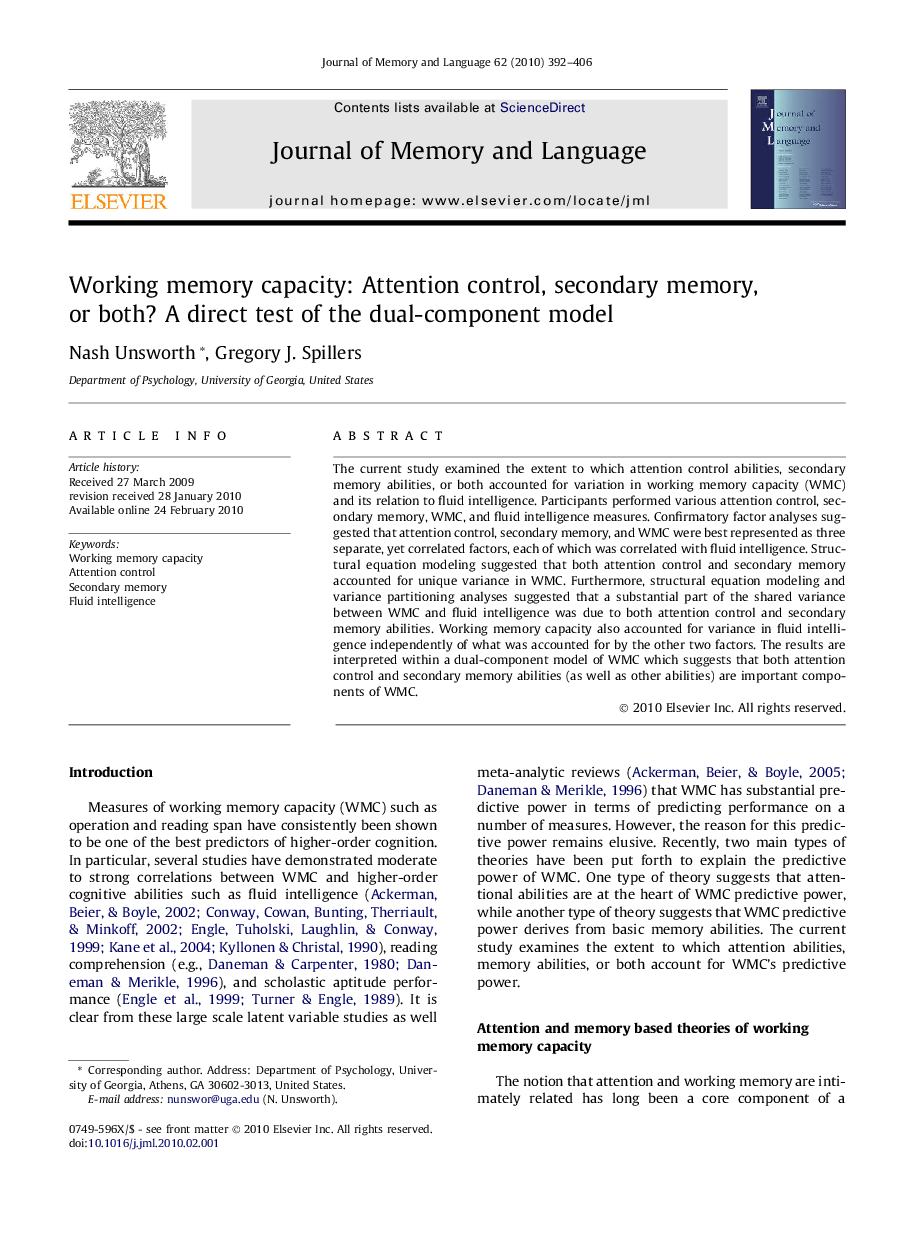| Article ID | Journal | Published Year | Pages | File Type |
|---|---|---|---|---|
| 932056 | Journal of Memory and Language | 2010 | 15 Pages |
The current study examined the extent to which attention control abilities, secondary memory abilities, or both accounted for variation in working memory capacity (WMC) and its relation to fluid intelligence. Participants performed various attention control, secondary memory, WMC, and fluid intelligence measures. Confirmatory factor analyses suggested that attention control, secondary memory, and WMC were best represented as three separate, yet correlated factors, each of which was correlated with fluid intelligence. Structural equation modeling suggested that both attention control and secondary memory accounted for unique variance in WMC. Furthermore, structural equation modeling and variance partitioning analyses suggested that a substantial part of the shared variance between WMC and fluid intelligence was due to both attention control and secondary memory abilities. Working memory capacity also accounted for variance in fluid intelligence independently of what was accounted for by the other two factors. The results are interpreted within a dual-component model of WMC which suggests that both attention control and secondary memory abilities (as well as other abilities) are important components of WMC.
